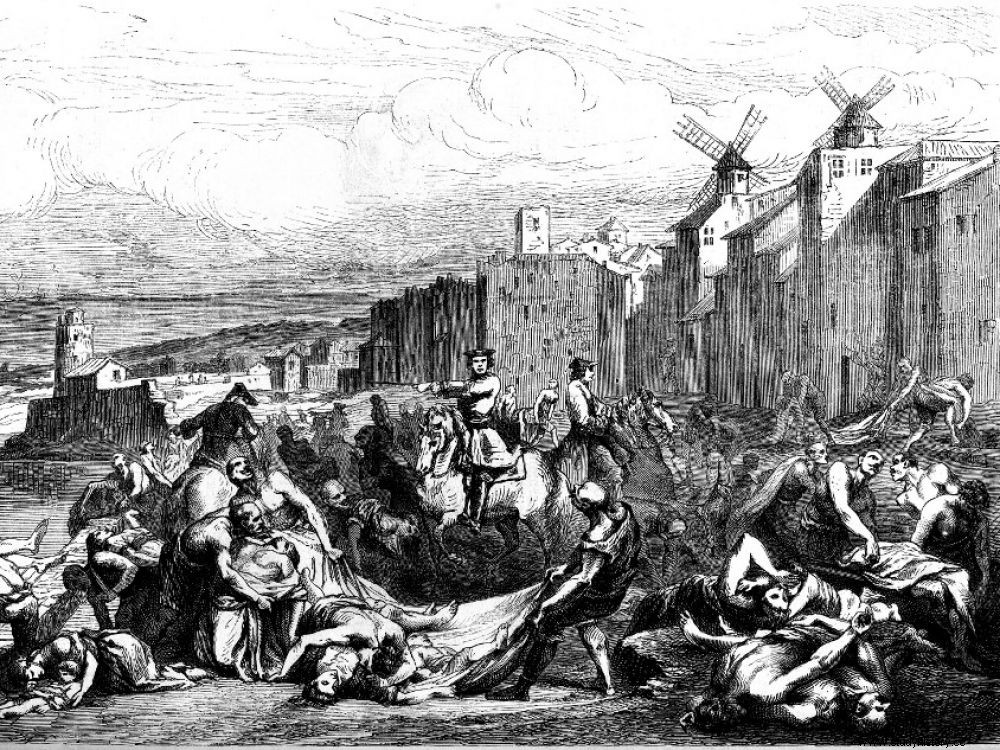The discovery of two bodies buried in an abbey in Puglia provides the first DNA evidence that the Black Death also reached southern Italy during the 14th century.

Plague epidemic in Marseilles in 1720-1721. Engraving from Lahure's Histoire Populaire de la France, mid-19th century.
Was southern Italy affected by the terrible episode of the Black Death? At the European Congress of Clinical Microbiology and Infectious Diseases (ECCMID), new results were presented indicating that at least two bodies discovered in this region of the world showed signs of Yersinia pestis infection.> , the bacterium responsible for the plague.
Excavations carried out in an abbey
In the middle of the 14th century, Europe was hit by the Black Death which would eventually decimate 60% of the population. Historians already knew that the epidemic had reached Sicily in 1347. On the mainland, it is known to have fatally affected cities in northern and central Italy. "Although cases of the Black Death are reported in several historical documents, no burial site has been DNA analyzed in southern Italy ", notes the European Society for Clinical Microbiology and Infectious Diseases in a press release published on July 8, 2021. Excavations carried out in the Abbey of San Leonardo de Siponto, in Puglia, have revealed part of the unknown history of the south of the country during the Black Death. This religious place was an important medical center for travellers, pilgrims and merchants to rest. A section of its cemetery was used from the end of the 13th century to the beginning of the 14th century. is here that archaeologists discovered the graves containing the remains of two men infected with the plague.
Was southern Italy affected by the terrible episode of the Black Death? At the European Congress of Clinical Microbiology and Infectious Diseases (ECCMID), new results were presented indicating that at least two bodies discovered in this region of the world showed signs of Yersinia pestis infection.> , the bacterium responsible for the plague.
Excavations carried out in an abbey
In the middle of the 14th century, Europe was hit by the Black Death which would eventually decimate 60% of the population. Historians already knew that the epidemic had reached Sicily in 1347. On the mainland, it is known to have fatally affected cities in northern and central Italy. "Although cases of the Black Death are reported in several historical documents, no burial site has been DNA analyzed in southern Italy ", notes the European Society for Clinical Microbiology and Infectious Diseases in a press release published on July 8, 2021. Excavations carried out in the Abbey of San Leonardo de Siponto, in Puglia, have revealed part of the unknown history of the south of the country during the Black Death. This religious place was an important medical center for travellers, pilgrims and merchants to rest. A section of its cemetery was used from the end of the 13th century to the beginning of the 14th century. is here that archaeologists discovered the graves containing the remains of two men infected with the plague.
A cemetery and coins to date deaths
"The recovery of ancient plague DNA from the teeth of two adults buried at the Abbey of San Leonardo de Siponto is a discovery of national significance, as it is the first linked to the second plague pandemic (Black Death) in southern Italy ", explained Dr. Donato Raele who led the research. One of the victims was a man between the ages of 30 and 35. "He wore a belt with a rectangular iron buckle and a rod , found flattened on his right femur. Most likely attached to this belt was a small bag which contained 12 denarii (Roman silver coins) found still stacked under his leg “, explains the European Society for Clinical Microbiology and Infectious Diseases. The second victim “was an adult male (45 years old). He was buried fully clothed and had personal items on him, including iron and bronze rings." The researchers also found "many grains of dark vitreous material in his left hand", what could be the remains of a rosary. It also kept 99 Tournament Denarii (a currency) dating from the late 13th century and early 14th century and a Gigliato coin issued in the name of Robert of Anjou (1309-1343).
"Since the dating of the burial and coins matches the arrival of the second pandemic in Europe, experts suspect the adults may have died during the plague black “, underlines the press release. “Four teeth of the adults in the graves have tested positive for Y. pestis,and were very similar to plague victims previously studied in other regions of Italy as they contained identical strains of Y. pestis". The abbey had become, despite herself, a place where the bacteria could easily spread.
